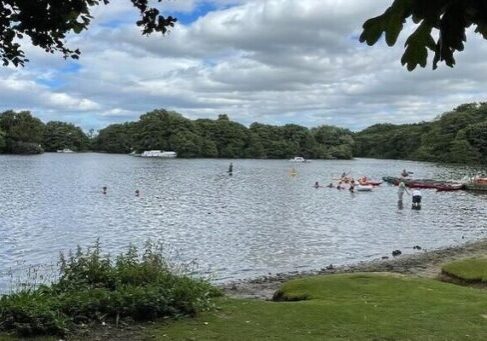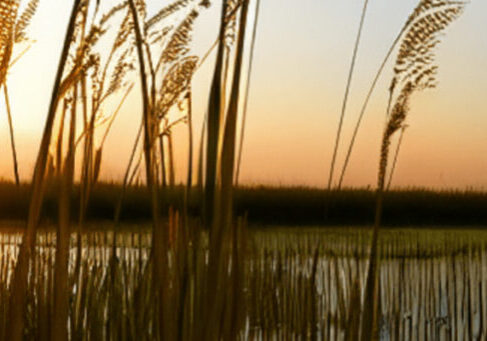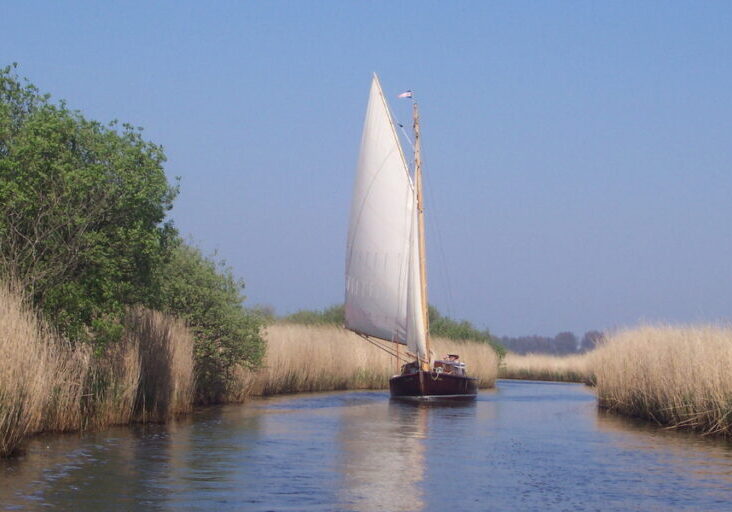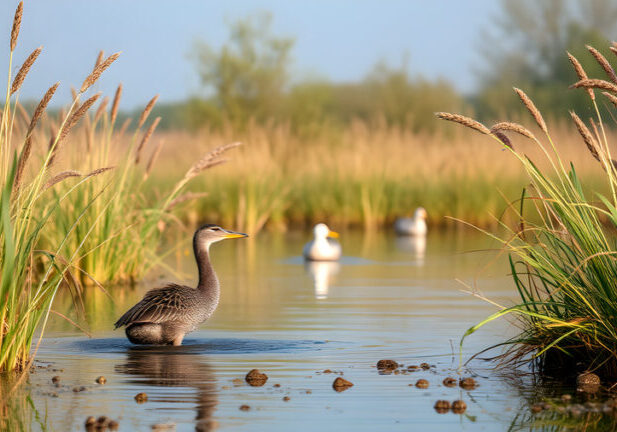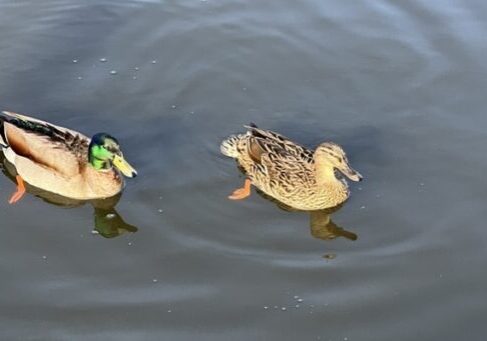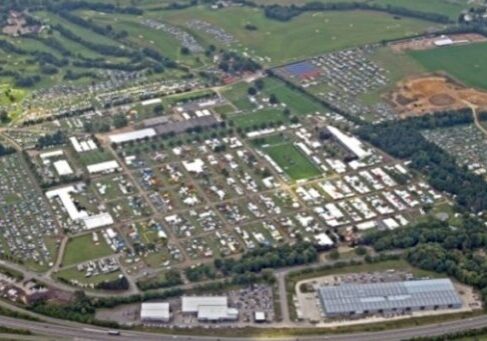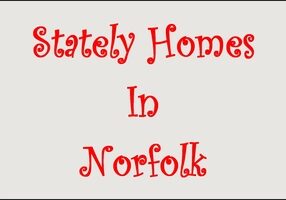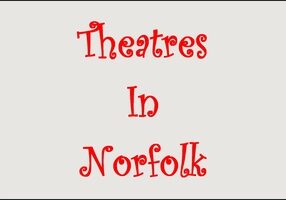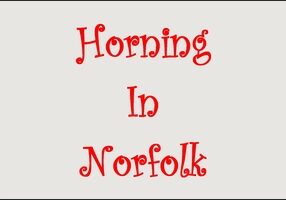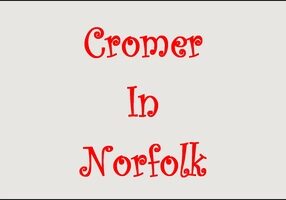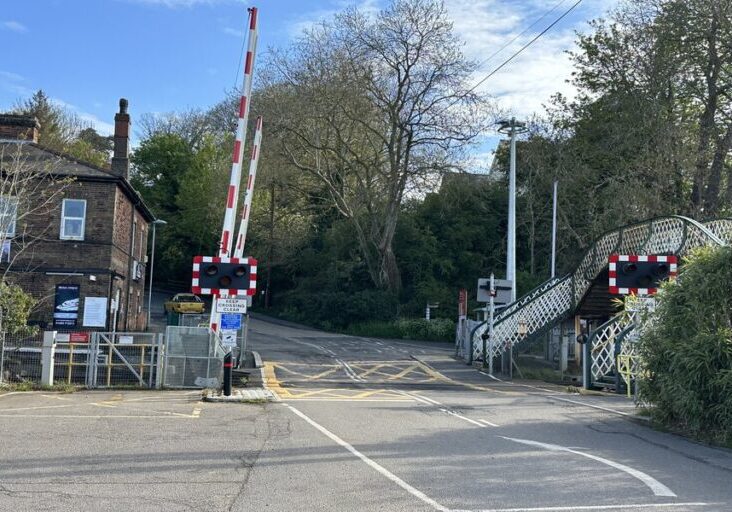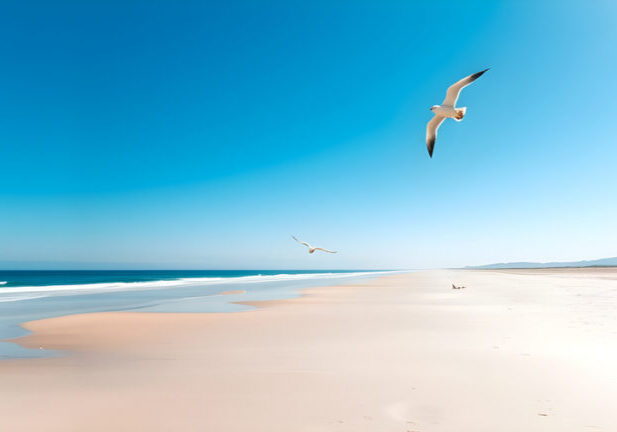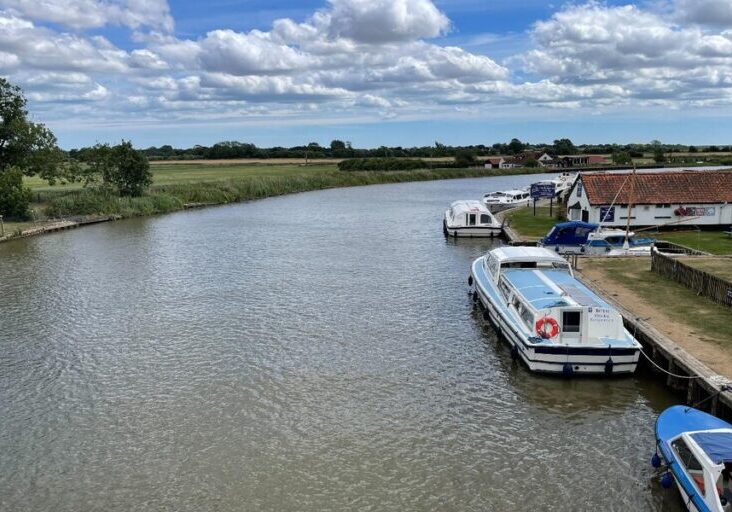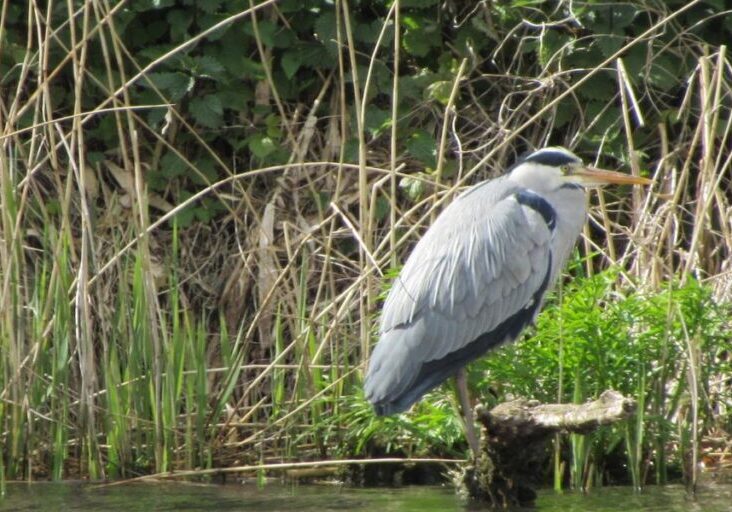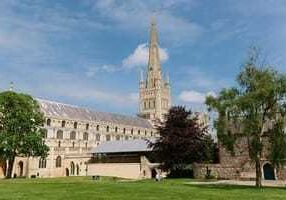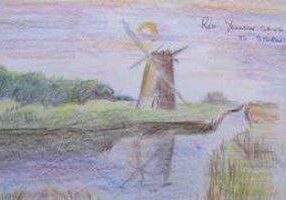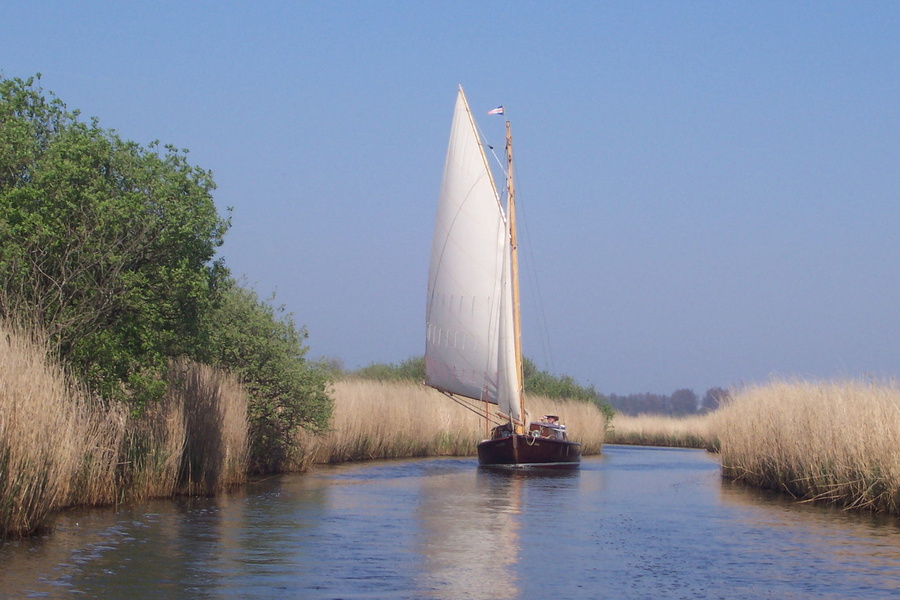
Norfolk Broads
The Norfolk Broads is a stunning stretch of natural beauty, covering over 300 square kilometres. This unique mix of rivers, lakes, and wetlands is a haven for nature lovers and those who enjoy life on the water. With miles of peaceful waterways, picturesque villages, and breathtaking scenery, it’s the perfect place to unwind and escape the stresses of everyday life. The Broads are also teeming with wildlife, from birds and fish to mammals living among the reed beds and marshes. Whether you want to go fishing, birdwatching, hiking, or simply relax, the Norfolk Broads promises a truly memorable experience.
Where Are The Norfolk Broads
The Norfolk Broads is located in the eastern part of England, primarily in the county of Norfolk, but also extending into parts of Suffolk.
Norfolk Broads Map
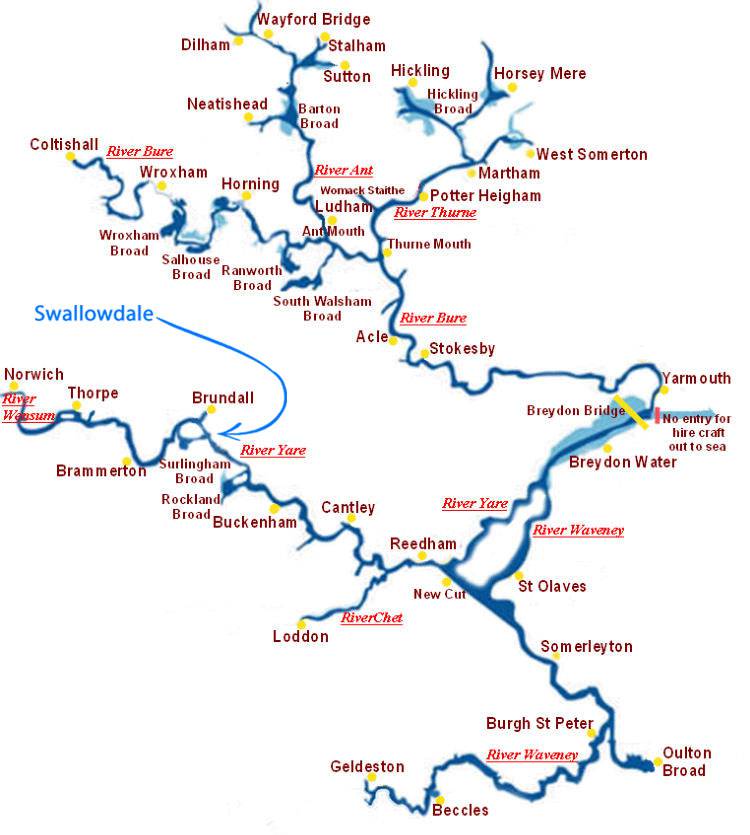
History Of The Norfolk Broads
The Norfolk Broads may look like a completely natural landscape, but they’re the result of human activity dating back to the medieval period. Between the 12th and 14th centuries, people dug out huge pits to extract peat, which was a vital fuel source at the time. As these pits were abandoned, they gradually filled with water, eventually forming the vast network of waterways we see today. Over time, nature took over, transforming these man-made lakes into a thriving wetland ecosystem.
Surprisingly, the true origins of the Broads weren’t uncovered until the 20th century. It was Dr. Joyce Lambert, a botanist and geographer, who discovered that these waterways weren’t naturally formed but were shaped by human hands centuries ago. Her research added a fascinating historical layer to the region, making the Broads not just a place of incredible beauty, but also of deep scientific and cultural significance.
Things To Do On The Norfolk Broads
The Norfolk Broads is the perfect setting for relaxation and adventure. Visitors can explore, reflect and experience the magic of this unique, picturesque National Park. The best way that sightseers can discover the beauty of the Broads is undoubtedly by boat, as there are many parts of the Broads that cars cannot reach. However, this is not a bad thing. Exploring the Broads by boat will help visitors discover the perfect fishing spots, spot the rare wildlife, and enjoy many hidden places.
There is no shortage of natural beauty and wildlife on the Broads. Some of the rare species found are the Norfolk Hawker Dragonfly, Otters, Teal, Shrews, Herons, in addition to many stunning wild birds. The Broads is perfect for any visitor, whether you want to explore historic villages, and nature or enjoy a delightful pub or restaurant in the countryside. Whether you are strolling down the waterways or stopping at a family-friendly pub, most of which are dog-friendly. Visitors enjoy the English country's fresh air, sparkling waters, and beautiful landscapes. When you visit the Norfolk Broads, an unforgettable experience is guaranteed.
Check out our what to do in Norfolk page for more things to do.
Exploring The Broads By Boat
One of the best ways to experience the Broads is by boat. The network consists of over125 miles of navigable waterways, making it an ideal destination for boating enthusiasts. From hiring a traditional wooden sailing boat to renting a modern cruiser, there are plenty of options to suit every visitor's preference.
- Day Boats and Canoes: Perfect for short trips, these are available for hire at various points across the Broads. Canoeing allows for a more intimate experience with nature, letting visitors glide silently through the waterways, ideal for wildlife spotting.
- Luxury Cruisers: For those seeking a longer stay, hiring a houseboat or cruiser allows for a leisurely exploration of the Broads, complete with onboard facilities such as kitchens, sleeping areas, and even hot tubs in some cases.
- Sailing on the Broads: Traditional sailing boats, or 'wherries' are a nod to the region’s historic transport methods and are still available for hire today.
Popular Routes
- Wroxham to Horning: A scenic journey through some of the most picturesque parts of the Broads.
- The River Bure to Great Yarmouth: Ideal for those who wish to experience the mix of open waterways and historic towns.
- The Southern Broads: Less crowded and wilder, offering an off-the-beaten-path experience.
Norfolk Broads Wildlife
Norfolk Broads wildlife boasts some of the rarest species. Due to its unique wetland habitat, it is a designated National Park and home to various birds, insects, and mammals. Some of the species you might encounter include:
- Bitterns: These elusive birds are a symbol of the Broads, known for their distinctive booming calls.
- Kingfishers: With their vibrant blue and orange plumage, kingfishers are a delight to spot along the water’s edge.
- Otters: Although shy, otters have made a significant comeback in recent years, and lucky visitors may catch a glimpse of them swimming through the reed beds.
- Swallowtail Butterflies: The Norfolk Broads is the only place in the UK where you can find the rare Swallowtail butterfly.
Walking And Cycling In The Broads
For those who prefer to explore on foot or cycling, the Broads offers an array of scenic trails.
- The Weavers’ Way: A long-distance footpath stretching 61 miles, passing through some of the Broads’ most beautiful landscapes.
- Bure Valley Path: Ideal for cyclists, this route follows a former railway line from Aylsham to Wroxham.
- Strumpshaw Fen: Managed by the RSPB, Strumpshaw Fen is a great spot for birdwatchers and hikers alike.
Attractions and Historic Sites
Beyond the waterways, the Norfolk Broads are home to several historic sites and attractions that offer insight into the region’s heritage.
- St. Benet’s Abbey: This medieval monastery ruins stand as a testament to the region’s rich history, accessible by both boat and foot.
- Horsey Windpump: A restored windpump offering stunning panoramic views of the surrounding marshland.
- The Museum of the Broads: Located in Stalham, this museum showcases the history and heritage of the Broads.
- Ranworth Church: Known as the ‘Cathedral of the Broads,’ this beautiful church offers breathtaking views from its tower.
Local Villages and Towns to Visit
Several picturesque villages and market towns are scattered across the Broads, each with its unique charm.
- Wroxham: Often referred to as the 'Capital of the Broads'. This bustling town is the perfect starting point for a boating adventure.
- Horning: The delightful riverside village of Horning with traditional thatched cottages and welcoming pubs.
- Beccles: Situated on the River Waveney, Beccles offers a mix of quaint streets, historic buildings, and excellent food spots.
- Ludham: A tranquil village with easy access to some of the most scenic parts of the Broads.
Best Times to Visit
Each season offers something unique in the Broads:
- Spring: A fantastic time for birdwatching and experiencing the fresh greenery.
- Summer: Ideal for boating, warm weather, and vibrant wildlife activity.
- Autumn: A quieter time with beautiful golden hues reflecting on the waterways.
- Winter: Offers peaceful solitude, misty mornings, and the chance to see overwintering birds.
Are The Norfolk Broads Worth Visiting?
With so much to offer such as fishing, wildlife, beaches, attractions, water sports, and much more, the Norfolk Broads is worth a visit.

